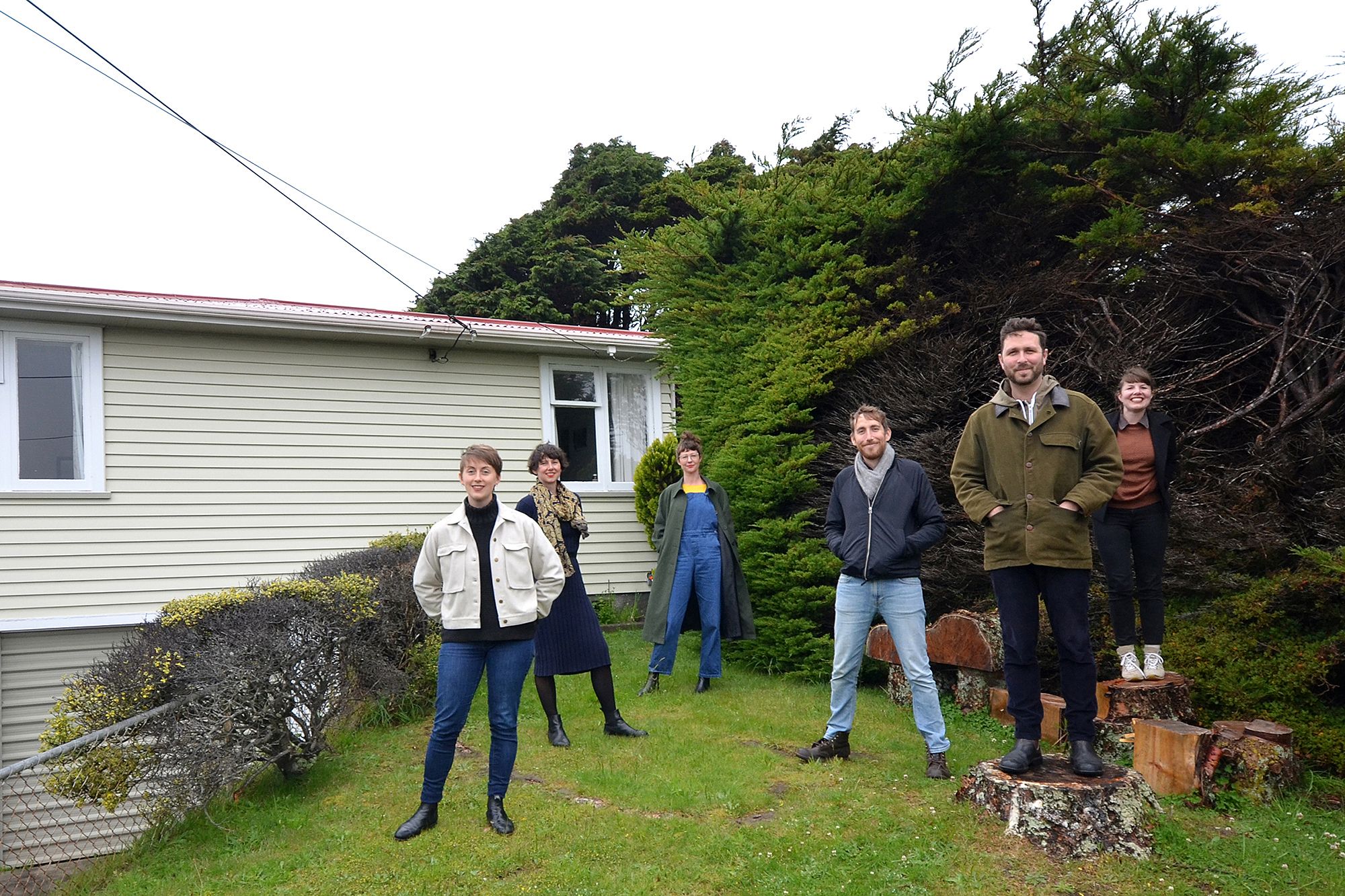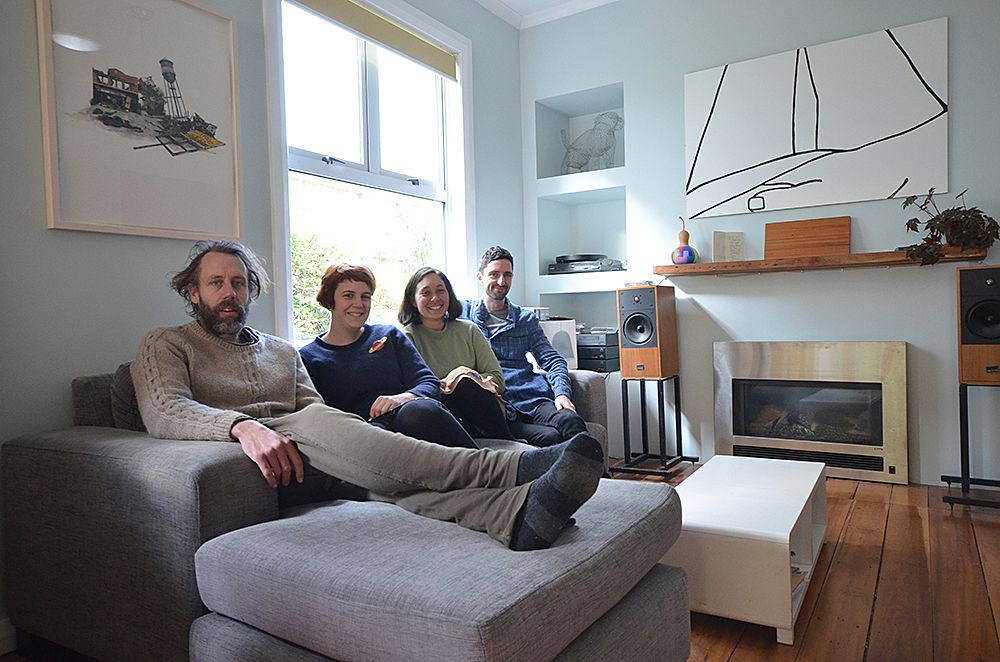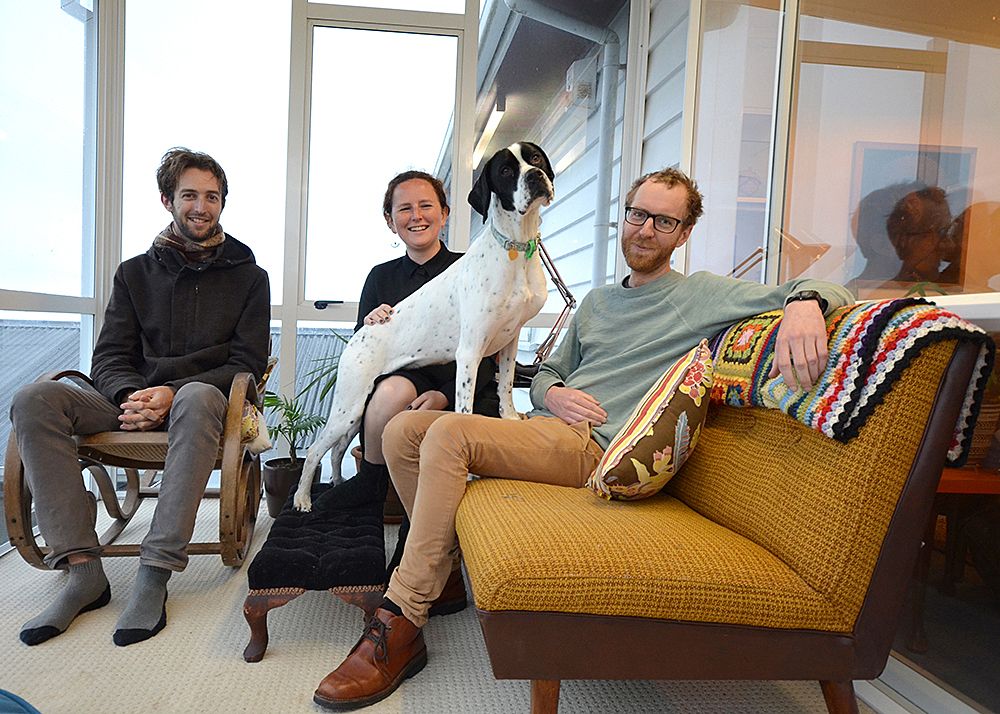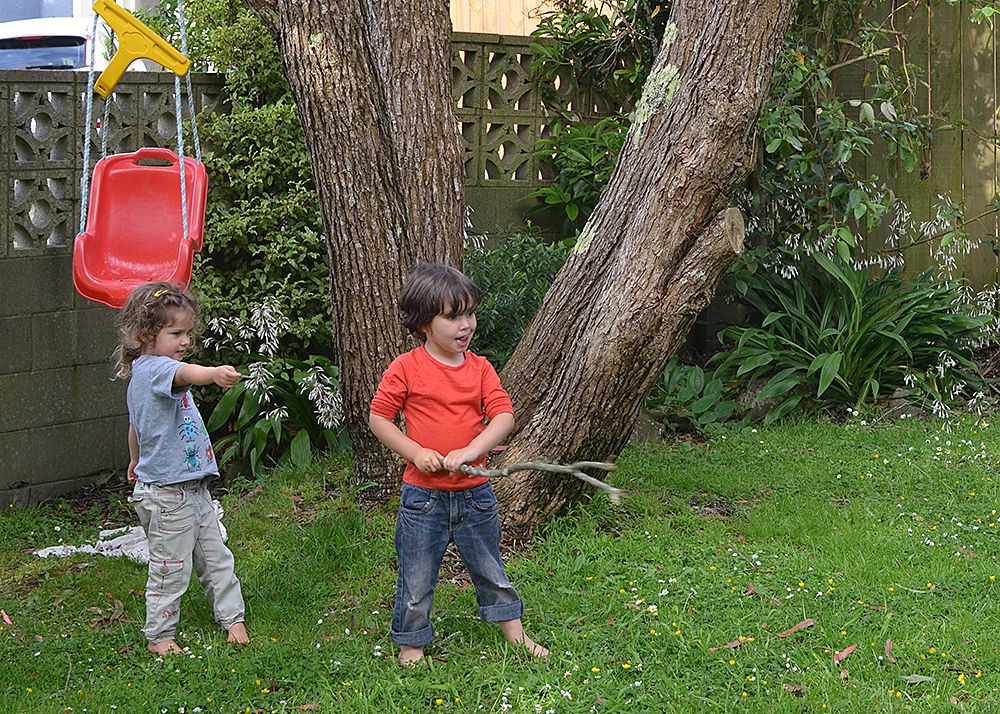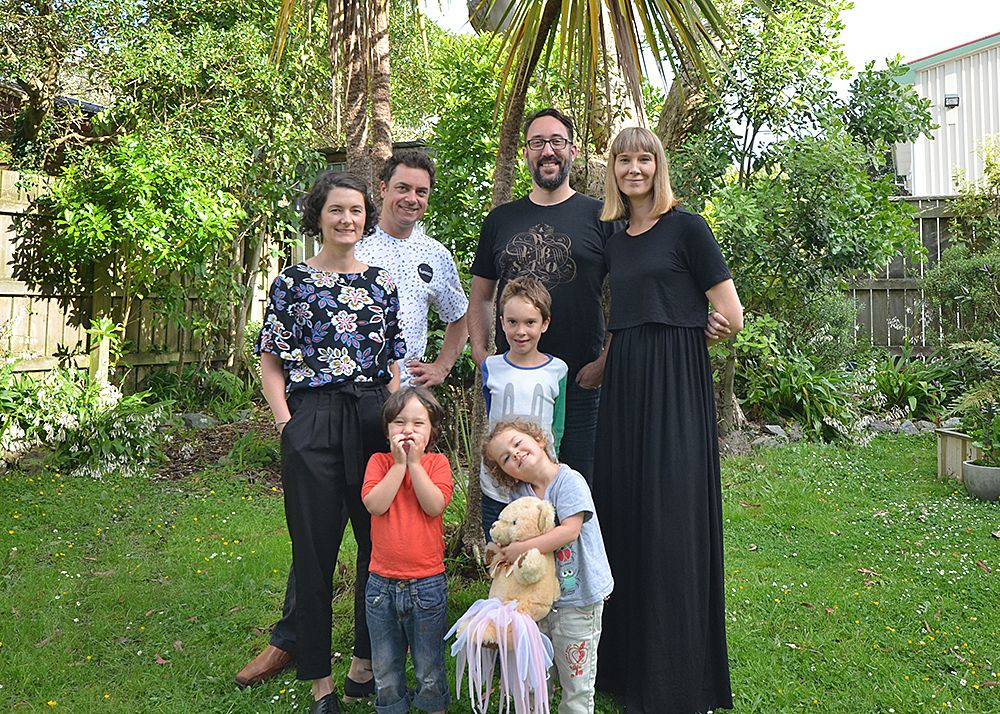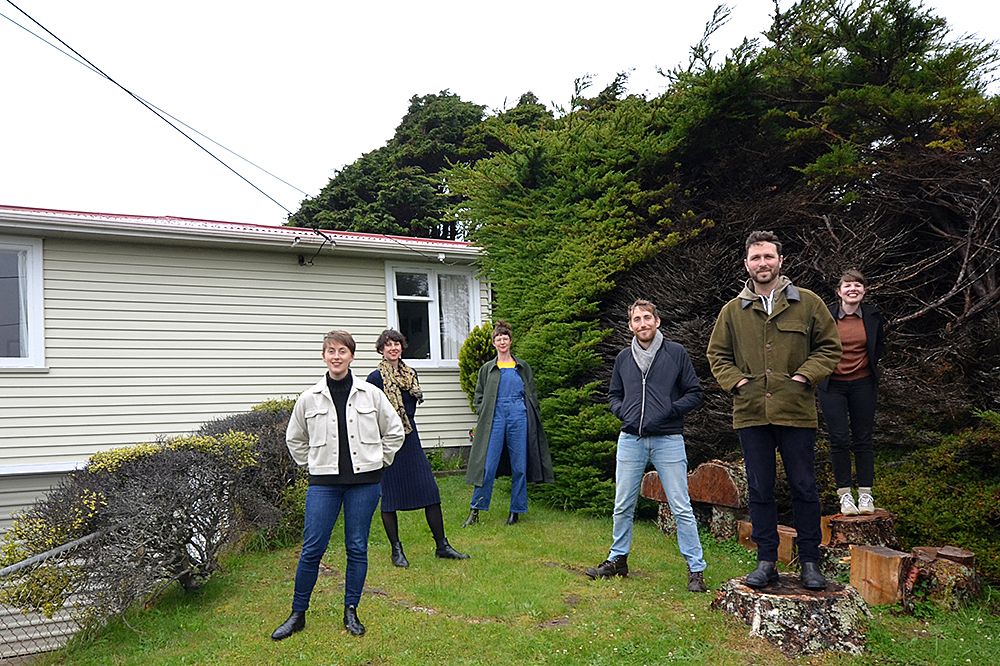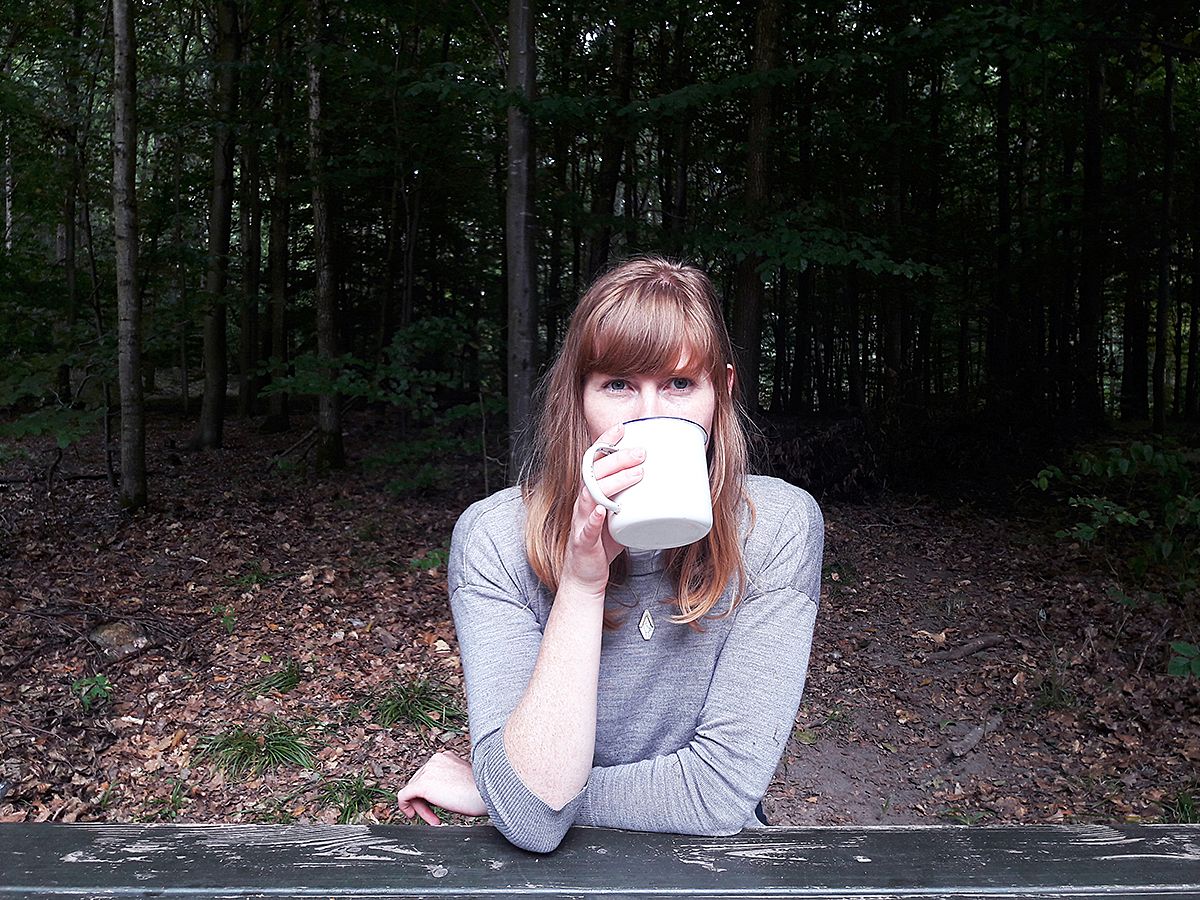Beyond the Quarter-acre Dream: Co-ownership and Co-housing in Wellington
Owning a stand-alone home is increasingly unaffordable. Hannah Newport-Watson asks if sharing property is the answer.
Owning a stand-alone home is increasingly unaffordable. Is sharing property the answer?
Aotearoa history is rich with models of collective ownership. Before colonisation, Māori lived communally in whānau and hapū groups. More recent history includes both religious and non-religious intentional communities – the oldest still running is the Christian Pacifist-founded Riverside Community in the Moutere Valley near Motueka; perhaps the most famous, James K Baxter’s community at Jerusalem. In the 1970s, the third New Zealand Labour Government established the ‘ohu’ scheme, which allowed groups to apply to the Department of Lands and Survey to set up alternative communities or settlements on vacant Crown land in rural areas. About eight ohu were established, none of which endure today.
In spite of these examples, it is the aspiration of a stand-alone, single-family home that has dominated our social narrative. Perhaps the origin of this obsession can be traced back to the promise of land made by the New Zealand Company and the colonial government to lure British settlers, the less wealthy of whom left behind tenements and terraced housing. Throughout the 20th century, the government continued to reinforce this norm through a succession of policies and interventions that favoured the suburban family home. But today, the aspiration of buying a home is a more distant possibility than it’s ever been for younger people, even those with relatively comfortable incomes.
Most of the current models for collective ownership in Aotearoa – notably, the papakāinga model and eco villages – are rural and land-based. For those who don’t want to leave the cities in which we live, work, study or make art, urban alternatives are harder to find. Co-housing, whereby a number of private dwellings are clustered around shared facilities, is one model that appears well suited to densely populated areas, as proven by its rising popularity in urban centres.
I spoke to four groups of friends who have teamed up and forged their own version of co-ownership or co-housing in Pōneke. They’ve had to figure out for themselves how to make it work – legally, financially and socially.
*
Bevan, Anna, Micheline and David live in Brooklyn. Micheline and Anna met in their first few days at university. They flatted together for many of the years since, first joined by Anna’s partner Bevan, and more recently, Micheline’s partner David.
“Anna and I have lived together for most of our adult lives,” says Micheline. “So it didn’t feel like much of a stretch to go into ownership together.
“Our society kind of pushes us to ‘nest’, ideally as a couple, because that’s what we’re meant to do – or, if you don’t have a partner then you go off and live as an individual. And I just can’t imagine doing that, having lived communally all of my adult life. I think it’s really disappointing that that’s what society pushes us towards.”
“A lot of people don’t seem to understand that it’s expensive,” says Bevan. “My parents were like, ‘When are you buying a house?’ when I was in my 20s and trying to be a musician. And I was like, ‘I don’t really have $500,000,’ and they were like, ‘Why not?’”
Theoretically, says Micheline, it would have been possible for her and David to buy alone. “But we would have been servants to that mortgage.”
*
Mike, Alex and Davey live in Melrose. The three friends were previously flatmates in a six-plus-person Aro Valley house, paying half of the $1,000-per-week rent between the three of them. “I moved into [the flat on] Devon Street,” recalls Alex, “and I said, ‘Have you guys ever thought about buying this place?’
“It just seems to be that everything affordable for single people – leaky homes, company shares, older converted gentrified warehouses that aren’t earthquake safe – banks don’t want to go near them. It didn’t leave many options, unless I was coupled up. And I like these guys, I like living with them.”
When they heard their landlord was planning to sell the house they shared, they made an offer. “We had no idea what we were doing,” says Alex. “We’d made all these calculations and done loads of research, but we actually had no idea how much the house would sell for.”
Ultimately, the Aro Valley house was out of reach – but the idea to try and buy a house together had been sparked. With the house sold, the imminent necessity to move out spurred them to keep looking. Eventually, with their move-out deadline looming, they got lucky.
*
Harriet, Tim, Darryn and Tanya live in Newlands. Harriet and Tim, with their two young sons Benji and Theo, live downstairs; Tanya, Darryn and their daughter Ada live above – and the two families share the garden.
“Tanya and I had been thinking about buying together as friends,” recalls Harriet. “We used to flat together, so that’s how we knew that we could live together... Slowly, it became more and more serious. I don’t know what made us turn that corner. I think it was just frustration at paying high rent and not being able to find a path out of that.
“[Tim and I] probably could have applied for a higher mortgage and got it [to buy alone]. But we wouldn’t have been able to actually repay it in any liveable, enjoyable manner. I think the conversation came down to, either we buy a house this way, or we don’t have another child.”
They hunted for over a year to find a home within budget that would suit two families, looking further and further out of the city. Eventually they found a former 5-bedroom house that had been gutted by the owner. “It was just a shell,” recalls Harriet. “Concrete floors and timber framing.
“I remember Tanya saying that when she walked in upstairs – which was more constructed, in that it actually had walls – and it was warm. We’d looked at so many damp, falling-apart houses.”
“It’s sad, eh,” laughs Tanya. “What drew us to it? It wasn’t disgusting!”
They moved in upstairs and worked together to finish building both flats. “We were living together and having our normal lives go on,” says Harriet, “so we were building at night and in the weekends. And Tanya and I were both pregnant. It became like, right, this baby is due then, this house must be done by that point.”
“It was the best of times; it was the worst of times,” says Tanya. “Not the togetherness, just the horror of the task at hand.”
“It was certainly stressful, that initial first year,” says Harriet. “But now I really know that Tanya and Darryn have our backs. I think quite a big part of the appeal of buying together was actually taking a community with us. I’m leaving the community that I felt really tied to [Aro Valley], but I’m taking a little bit of it with me, to keep me company in the suburbs.”
*
Joe, Alana, Tania, Tish, Nicole and Hamish live in Southgate. Or rather, four of them live in Southgate in a house co-owned by all six friends. With the house at cosy capacity, Joe and Alana rent a room nearby. In early 2019, if all goes to plan, the old house will be removed to make way for construction of four townhouses, plus communal facilities.
“Everyone connects in different ways,” says Tish. “Joe and Alana are a couple, and Alana is Nicole’s sister. I went to uni with Nicole in Dunedin. And then there’s Tania and Hamish, another couple, who have lived in Wellington for ages... I think it was Nicole and Tania who had a little moment of, ‘Hey, let’s team up and see what we can do.’ I sort of drifted in from Auckland. When I heard about it, I thought, ‘Hey, I gotta get in on this!’”
“It was quite casual for a while,” remembers Joe, “then things just happened really fast when we found a piece of land we wanted to tender on. It’s really hard to get a house. And it’s not necessarily something anyone wants – an old house that you need to work on for years and which is overpriced. Alana and I could have stretched to something, but it just feels fundamentally not worth it. So the idea was to try and build a co-housing development that got us into warm dry houses but then also provided those co-housing benefits, of having friends around and all the things that come with that, like being able to pool funds to achieve more than we could have individually.”
Their plan is to build four townhouses on the 650m2 site, each about 77m2 with two and a half bedrooms. Offsetting the relatively small houses will be a communal area, with a spare bedroom, a shared laundry, a shared living space with a balcony – and shared gardens.
“I had a great aunty and uncle who lived together,” says Tish. “They were brother and sister, and they had the best time. You want to do something like that where you can just continue having fun with your friends for a really long time.”
*
“I remember saying to Mike and Davey,” recalls Alex, “‘so, what happens if one of you dies?’ And they were like, ‘What?’”
Having the idea to team up and buy – or build – a home as a group is one thing; figuring out the legal and financial arrangements is another entirely. Hard questions have to be asked. Many of the people I spoke to benefitted from the advice of friends, colleagues, or friends of friends who had already negotiated their own collective ownership arrangements; others sought advice from professionals.
“We got a lawyer,” says Alex, “but I don’t know that he gave us that much good advice, to be honest… I kind of knew what I wanted, and I knew how it would work. That’s probably just a personality thing.”
So what does happen if someone dies? “Basically,” says Alex, “if anything happens to one party, the other parties have the option of purchasing their share. Whether it’s because one person dies, or they want out, or they can’t pay their mortgage, or if they’re being sued by their partner because they’ve broken up. The first option is to the two remaining parties. And if they can’t agree, or can’t do that, then it can go to an uneven share between the two remaining parties. And if that doesn’t happen, then it can go to just one party, or to another party that both other parties agree on. And if all of those options fall over, then it goes to open market, and the whole house has to be sold.”
The legal agreement itself doesn’t have to be lengthy. “Ours is six pages long,” says Alex. “It’s quite succinct. We cut out that stuff [about living arrangements]. We kind of approached it like we’re still flatting, so as flatmates you kind of work stuff out, you don’t need a legal document to do that.”
When contemplating their own project, Tish and her friends looked to other co-housing developments. “Alana had attended the Earthsong workshop to hear about their process, the challenges that you might expect,” says Tish. “Theirs was huge in scale compared to ours, but it was interesting to hear their stories. There was nothing that we could model off precisely, but you just pull all of that information together and fumble your way through.
“The initial meeting with the lawyer, before we put the [first] offer, I feel like that was quite a big moment, because we went in thinking, ‘Are we crazy or are we not? Is this something that can be done?’ And he sort of went, ‘Oh, I’ve seen way crazier. You guys are fine. What’s the worst that could happen? You kill each other?’ Everything is achievable, was pretty much what he said.”
“I feel like the advice came in – whatever the opposite of thick and fast is… thin and dribbly,” says Micheline. “It felt like we kept on learning things along the way.”
Sound advice might have been hard to come by, but the opinions of family, friends and strangers rolled in – some more supportive than others.
“Everyone that has a cautionary tale has told it to us,” says Anna.
Everyone that has a cautionary tale has told it to us
“But then, there are plenty of stories about people who get divorced, as well,” adds David.
“Ninety-nine per cent of people we told about what we were doing thought it was a bad idea,” says Harriet. “Or they thought it was a cute idea that was doomed to fail, and would kind express incredulous shock or surprise every time we told them that we were still getting on.
“The comparison people make is with a commune – you’re living together in a commune based around shared ideals, and in such close quarters – but the whole reason for doing two separate houses was so that we didn’t have to do that. I guess people just thought we were a bit young and naïve and a bit idealistic.”
Tanya found the ongoing enquiries a bit much. “It’s like, I’ve got a new job. I’ve had a baby… ‘Yeah, but is your commune falling apart?’!”
However, Anna thinks there’s been a recent shift in perceptions. “Even just in the time since we started talking about it. Like our real estate agent, on the day we moved in, which was two months after we went unconditional, said, ‘More people are buying like you guys now. It’s less weird.’”
Our real estate agent ... said, ‘More people are buying like you guys now. It’s less weird.’
Most of their parents, while perhaps bemused, accepted it was their best, or maybe only, chance to own a home. “From my parents’ perspective,” says Tanya, “they were a bit uneasy and probably would have preferred that we take a more traditional approach, but home ownership is important to them so I think they were happy we were doing it at all. And they know that it’s impossible for people our age to buy a property.”
Some banks are also unaccustomed to co-ownership. Joe and his friends found Kiwibank helpful, but dealing with banks proved to be more challenging for others I spoke to. “Bank staff that we’d speak to just could not get their heads around it,” says Harriet. “We’d explain that this is one family and this is another family and we’re buying together, and they just couldn’t get it. They’d go, ‘But who’s the guarantor, and who’s actually going to live there?’ And you’d go back and forth. They could not comprehend that people might want to live in close quarters.”
But far more difficult than the number of people involved was whether or not they were employed in permanent, salaried positions.
“It was quite difficult [to get finance],” remembers Bevan. “But I don’t think it was because we were a group. We’re not all full-time employees. That was what they didn’t like.”
“The banks were pretty difficult about the contractor thing,” agrees Micheline. “It didn’t matter that Anna and Bevan never had any issues paying rent. They didn’t look at their history. They were just like, ‘You don’t have a long-term contract, so therefore we don’t trust you.’”
“I do feel that as more and more people are contracting and have less stable employment, hopefully they’ll figure it out eventually – or they’re not going to have anyone to lend to,” says Anna.
Alex and her friends had a similar experience. “Mike’s sole-trader thing made it quite difficult. We went to a bank, and the bank was useless. It was awful. They were like, ‘Mike doesn’t earn any money.’ But the mortgage broker was like, ‘No worries, we’ll sort it out.’”
So how does a mortgage work with three, four or six people involved?
“We’re all jointly liable,” explains Anna, “because that’s how it works, we didn’t really have a choice. Essentially we decided to just split it down the middle. We had slightly different deposits as couples, but we still have 50/50 splits. So Mich and David are in charge of their whole half, they can pay it off over however many years they want, at whatever rate they want. And the same for us.”
Alex and her friends also have one mortgage under all three names. “We’ve structured it so that we can see what each of us owes. I’ve just labelled mine and I pay into my structure. But if one of us didn’t pay the mortgage, we would all be liable.”
“It’s essentially just like a joint bank account, but a joint mortgage,” says Mike. “That seemed to be the only way to go, really. When we went to the other bank and tried to get three mortgages it was tough. It wasn’t going to happen.”
“This way,” says Alex, “someone with a larger deposit is helping balance out someone else who can pay their mortgage but doesn’t have that. It all kind of balances out.”
“And the bank sees it as less risk,” adds Mike.
Someone with a larger deposit is helping balance out someone else who can pay their mortgage but doesn’t have that
Even with six of them involved, Joe and his friends also have one mortgage – at least for now. “We divided our loan into fixed and revolving credit, both of which we pay off collectively. We all put spare money into the revolving credit account, so it is essentially a shared savings account. It is currently in credit and keeps our interest rates minimal until the construction loans kick in.
“Obviously trust is quite important. But it’s all pretty easy to track. We’ll do a wash up at the end [once the townhouses are built] where we assess how much each party has contributed and the value of each unit, and use that to divide up the remaining mortgage. Meanwhile, it’s just a matter of putting in as much as we can.”
*
Everyone I spoke to about sharing a property agreed that it helps to share some values, too.
For Micheline and her friends, shared meals bring them together. “It definitely helps that everybody is vegetarian, and that everybody wants to eat together, at least some of the time.”
“And I think that part of the reason that we’d want to live with other people is that we can help each other out,” adds Anna.
For Alex, Davey and Mike, it’s about trust and communication. “I’ve definitely got girlfriends who I would trust as much as these guys,” says Alex, “but wanting to live with them is a different story. I think Mike and Davey are pretty unique in that I want to live with them, and I think it’ll work. And if it did go all tits up, I think we’d all be civilised enough to walk away.”
Tanya and Harriet also emphasised good communication. “I think me and Harriet probably share a lot of core values about how you be in the world,” says Tanya, “and how you relate to other people and your community and your globe. But I think a core thing that’s probably stopped it turning to shit is that everyone’s quite a good communicator, including the boys. Maybe especially the boys.”
A core thing that’s probably stopped it turning to shit is that everyone’s quite a good communicator
Tish and her friends also put a lot of time into discussing shared values before deciding to build together. “That was something that we felt like we needed to establish first, before the financials and some of those harder aspects.”
Joe adds, “The sort of things like, we weren’t in this to make money. I mean hopefully we’re not losing money, but these aren’t things that we’re planning to build and then sell on; they’re our homes. We joked at the start that we’re building ourselves a retirement village.”
For Harriet and Tanya, their children are a key reason to share. “Theo and Ada – our youngest child and their child – are seven months apart and are inseparable and just absolutely adore each other,” says Harriet. “That’s a pretty luxurious position, to have your kid’s best friend upstairs and know that if you need half an hour to yourself, or you’ve got to get something done, or want to go out, or whatever, I can send Theo upstairs and Darryn will always be happy to receive him, and vice versa.”
Anna, Bevan, Micheline and David don’t have children, but have agreed it’s a possibility. “Having kids in the house brings potential risks,” says Anna, “like the potential different parenting styles that may exist when you have kids from different families growing up in the same house. But we’ll figure that out later if it does happen.”
“You know that the chances are at some point we’re going to disagree over something,” says Joe. “Pets might be one. Apparently that is the one thing Earthsong have had to go to mediation on, maybe five times.”
For Alex, Davey and Mike, who bought as individuals, I wondered how they see their love lives fitting into the picture.
“Mine fits very well inside the house,” says Alex. “He lives here, and pays rent. And is very handy with a paintbrush! But he’s just considered a flatmate. We’ve said that we’ll get a pre-nup. It sounds like it’s something to do with a marriage, so I think it can sound quite scary, but I’m quite black-and-white, so with Tim I was just like, ‘Look, we need to do this. I love you and this doesn’t indicate anything about what I think will happen in the future.’ So he just laughed and said, ‘Yeah, whatever.’”
“I suspect we won’t be living in the same situation in five years’ time,” says Davey. “As much as I love these guys, we’re all in our late 20s or early 30s and it’s quite a dynamic time in our lives. This living situation might suit us happily now, but things can change quite fast.”
Micheline and her friends plan on living together for at least five years. “That doesn’t mean that in five years we’re selling. It means that we could if we want to. Potentially we’ll be here forever, but it’s just really hard to know how things might change.”
“Our path out of this house,” says Harriet, “when we choose to sell or whatever we want to do, will just be a series of conversations, like coming into the agreement was. I think we’re old enough and close enough friends that we don’t stand to gain anything by fucking each other over.”
I ask what everyone’s biggest worries or challenges have been.
“I definitely felt nervous about a big lot of money being spent on a thing,” says Micheline, “and being in a massive amount of debt. But that’s not specific to the group living situation, that’s more about how it’s just quite terrifying being in a lot of debt.”
Bevan agrees. “The main thing I’m stressed out about is the mortgage. For some reason, psychologically, paying a mortgage is weirder than paying rent.”
For Tanya, shared ownership actually helped. “I was petrified of being in debt over my head. So halving the debt together made me have less worries.”
The rising cost of building is a challenge for Joe and his friends. “This is the second round of plans. We had some plans that we were really happy with, and we got them priced and it just came back a lot more than we were expecting. The building market’s really crazy. It was quite a shock. So we had to redesign. We could just save for another year, but it doesn’t really make a lot of sense to wait at the moment.”
Knowing they have a lot of hard work still ahead, Joe and Tish are cautious about whether they’d encourage others to do the same.
“It all comes down to your appetite for risk and your patience,” says Joe. “If it all works out like it should, I’ll definitely encourage others to do it.
“Everyone’s pretty supportive, because it’s objectively a good idea. We want more people living in medium-density housing, and people in warm houses. You instinctively want a story that’s different to the housing crisis. I’m not sure yet if this is it, but if it works, it’s good.”
*
Reflecting on Joe’s mention of the housing crisis, I’m conscious that, overall, the people I spoke to are comfortable. While they come from different family backgrounds, in general they are well-educated, middle class. They are not the people who are most affected – and let’s be honest, suffering – from the housing crisis.
Yet the people I spoke to are affected by the same context. All born in or around the 1980s – ten or 20 years earlier and they would most likely have been able to buy a stand-alone home without difficulty. But the world has changed, and they’ve been forced to think differently.
Co-ownership and co-housing will not be for everyone and will not provide the ‘solution’ to the housing crisis. But as housing affordability continues to drop, it feels inevitable that more and more people will consider the financial benefits of sharing – and perhaps the social benefits, too.
There were many commonalities amongst the people I spoke to – they faced similar practical challenges and all spoke of the importance of trusting each other and communicating openly. But what interested me most were their motivations and long-term aspirations. For some, co-ownership was a means to an end, a leg up and a temporary step along the difficult path to owning their own home independently in future. For others, a deep desire for community – balanced with the right amount of privacy and independence – means they see co-ownership or co-housing as a long-term project.
Thinking of the future, I ask Joe and Tish what they are looking forward to, after the hard work is done.
“A lifetime of debt?” Joe laughs. “I’m really looking forward to living in these places and being warm. But I’m also really looking forward to knowing that I have a place to come back to if I go overseas. Knowing where is home.”
